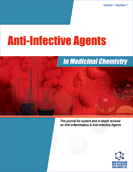Abstract
Since the mid-1980s, the nucleoside reverse transcriptase inhibitors (NRTIs) have established their position as valuable antiretroviral (ARV) agents in the treatment of human immunodeficiency virus (HIV) infection. Today, NRTIs still constitute the “backbone” of highly active ARV therapy regimens. The combination of different ARV classes has enabled the goal of successful suppression of HIV replication to be achieved in most HIV infected patients and is currently standard of care to prevent the development of AIDS. The NRTIs and nucleotide reverse transcriptase inhibitors (NtRTIs) are prodrugs which require intracellular phosphorylation before they become active compounds. Apart from zidovudine they are all water soluble, and generally have a wide volume of distribution. The NRTIs undergo a three step phosphorylation process whilst the one currently available NtRTI, tenofovir, only requires two phosphorylation steps to create a clinically active diphosphate metabolite. The active phosphorylated derivatives then compete with the endogenous nucleotides for viral reverse transcriptase. Several steps in intracellular phosphorylation are rate limiting and a number of intracellular factors can affect this metabolism. There are also external influences which can affect this process. The intracellular factors include: cell type; timing within the cell cycle; levels of dideoxynucleoside analogue triphosphates (ddNTPs) created by the phosphorylation of NRTIs, and endogenous cellular deoxynucleotide triphosphates (dNTPs) which compete for substrate binding to reverse transcriptase. Importantly, drug-drug interactions involving NRTIs with other ARVs as well as with non-HIV classes of drugs are complex and may lead to the development of toxicity or limit drug efficacy. This is of particular importance with the numerous new agents in development The review will discuss the main pharmacological characteristics of the available and investigational NRTI/NtRTIs and a brief summary of the possible drug interactions which may occur between different ARV agents. An extensive discussion of drug-drug interactions between ARVs and other agents is outside the scope of this review.
Keywords: HIV infection, nucleoside reverse transcriptase inhibitors, antiretroviral pharmacology
 9
9





















